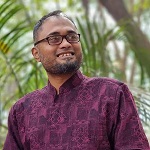Young voices from the CHT want the Bangladesh government to shift rigid view of the hill tracts beyond its security lenses
-66fad74d54ac0.JPG)
Hema Chakma, Parban Chakma, and Aditya Chakma (from left to right)
Discussions about the Chittagong Hill Tracts (CHT) region in Bangladesh often take place in hushed tones, as there’s a conscious effort to self-censor due to the potential for controversy from security and socio-political perspectives.
However, in the post-fascist era of Bangladesh, the unresolved issues surrounding the CHT region must be addressed.
The younger generation from the hill tracts feels a pressing need for dialogue as they seek inclusivity, assimilation, and genuine independence, rather than bigotry, prejudice, and subjugation.
Recently, Bangla Outlook (English) editor Faisal Mahmud spoke with three young individuals from the CHT region.
Parban Chakma has completed his LLB at Dhaka University and has been working at The Daily Star's law desk for the past two years. Aditya Chakma, a graduate in Computer Science and Engineering from BUET, is currently working as a software engineer at a multinational company.
Hema Chakma is studying Health Economics at Dhaka University and is also engaged with various youth organizations.
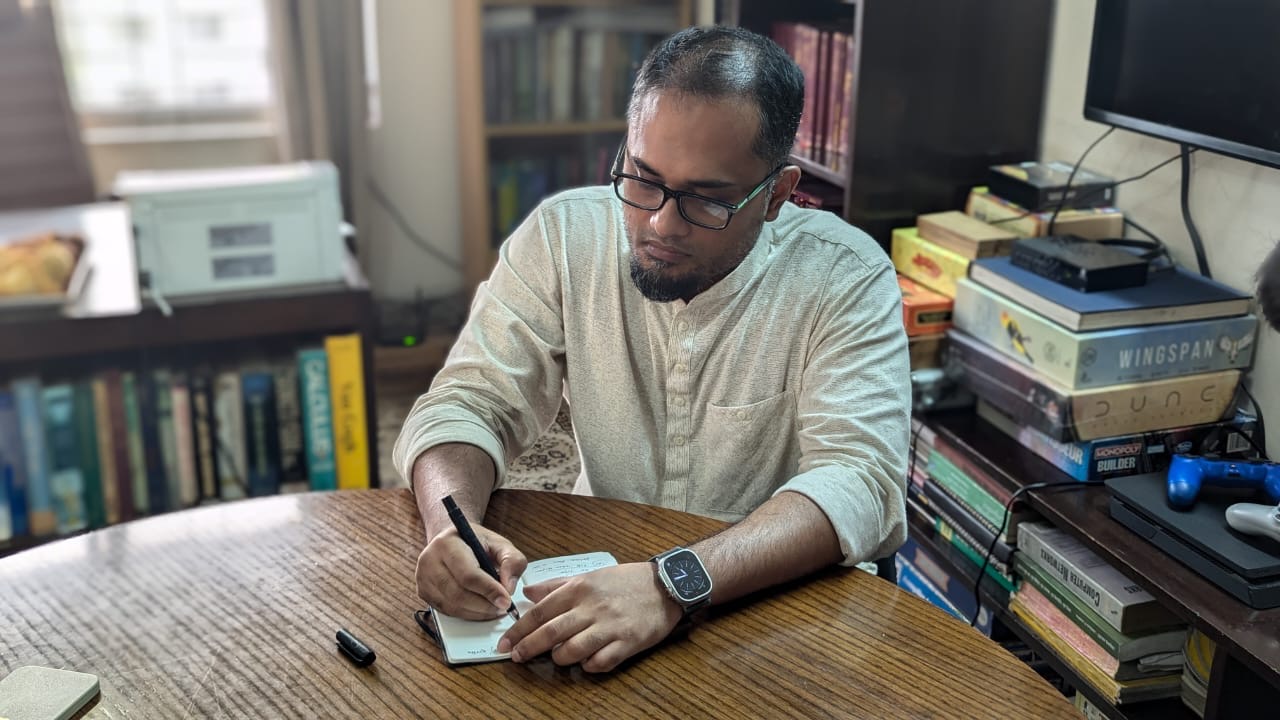
Here is the excerpt of that conversation.
Faisal Mahmud: My first question concerns a highly debated topic: In Bangladesh, we often refer to people from the CHT as indigenous, tribal, or small ethnic minorities, and there’s considerable discussion surrounding these classifications. Many mainstream Bengalis or Bangladeshis contend that those living in the CHT are not genuinely indigenous but rather small ethnic minorities or tribal groups. As individuals from the CHT, what are your thoughts on this?
Parban Chakma: There is no doubt that the terms indigenous, tribal, and small ethnic minority have become contentious issues in social, economic, and political discussions in our country.
Historically, the Chittagong Hill Tracts (CHT) were never part of Bengal until the British arrived in 1860 and established a treaty that granted us internal sovereignty for administration, while they took cotton from us. This treaty was signed with Chakma Jan Baksh Khan, and although there were revolts against the British, such as the Kapas Mehal uprising, the British largely refrained from interfering in our customs and governance.
Captain T.H. Lewin, the former deputy commissioner of the CHT, highlighted this in his writings. Additionally, in 1829, Mr. Halbed, the commissioner of Chittagong, stated that the hill tribes were not British subjects but tributaries, with no rights to interfere in their internal arrangements. The CHT Regulation of the 19th century used the terms "indigenous tribe" and "indigenous hill men" interchangeably, outlining the administration rules clearly.
Referring to Acts 4 and 52 of that regulation, it is stated that any Chakma, Marma, or other tribal member is considered indigenous to the CHT. While I don't want to delve into the debate about the meaning of "indigenous," it’s important to note the global consensus on the term. International frameworks like ILO 169, which Bangladesh supported but did not ratify, and the UN Declaration on the Rights of Indigenous Peoples in 2007 also recognize these categories.
Article one of the UN declaration also emphasizes self-identification, which is crucial for us in the CHT. The question is: Are we, the people here, identifying ourselves as indigenous? This self-identification is significant. Advocate Kawsar Ahmed, in his article “Defining Indigenous in Bangladesh,” notes that the non-dominant sectors of society—those without authority—characterize the indigenous communities. In contrast, the mainstream Bengali population holds positions of power.
Indigenous people in the CHT are often disconnected from these power structures, focusing instead on their internal governance and customary practices, such as the head-man system or "karbari." Until the peace accord in 1997, our participation in mainstream politics was minimal. Therefore, self-identification and our marginalized status in society are essential aspects of our identity. On that note, I think CHT people are qualified to be called as “indigenous.”
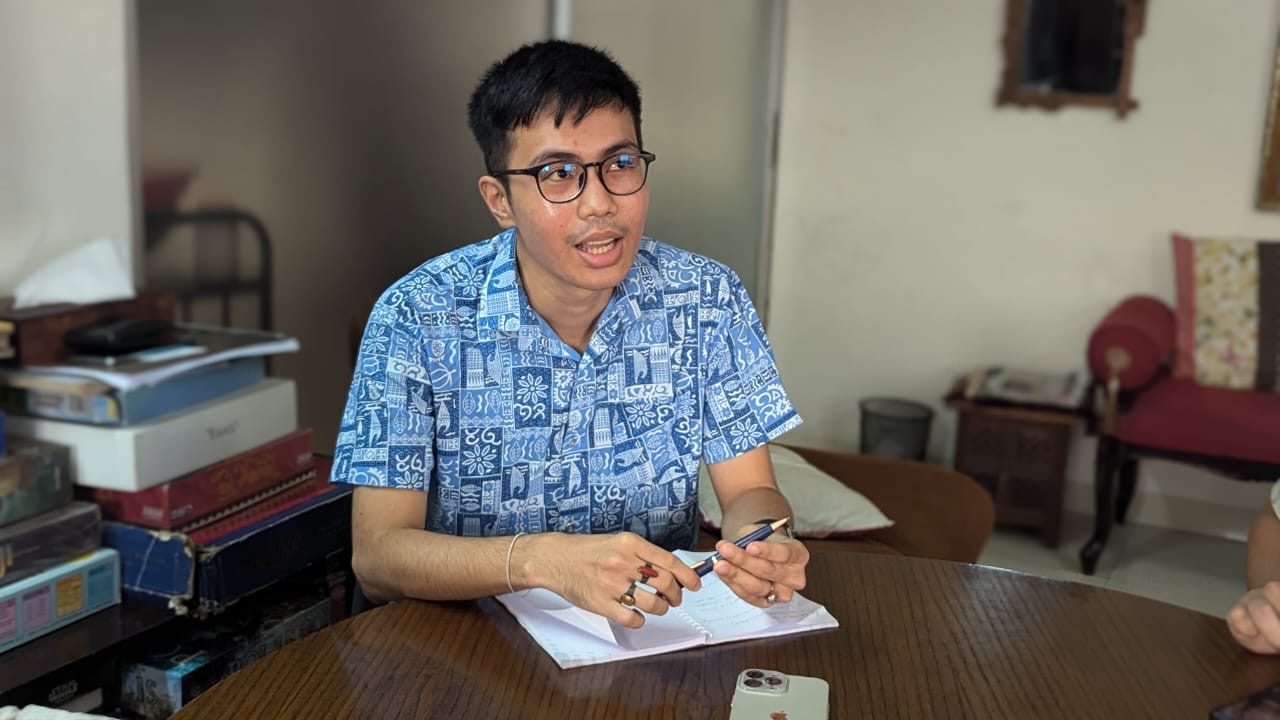
FM: My next question is for Aditya, what does the Constitution of Bangladesh say regarding this matter? To my understanding, the constitution acknowledges the indigenous population, but we have not ratified ILO Convention No. 169. Additionally, the term "indigenous" appears to have a specific meaning within the constitution. In this context, the 12 or 13 nationalities living in the CHT region do not seem to be officially recognized as indigenous. What’s your perspective on this? Do you agree with Parban’s viewpoint?
Aditya Chakma: First, I want to echo Parban's perspective on this matter. The issue of self-identification is crucial, and if we look at examples from countries like the USA or New Zealand, we see that terminology can evolve over time.
For instance, Indigenous peoples in the USA were once referred to as "Red Indians," a term that is now viewed as racist; they are now recognized as First Nations. This shift highlights how language can change based on context and understanding. In the past, we were labeled as tribal in the peace accord, but our experiences suggest that such terminology can also change. According to international definitions, we have the right to identify ourselves as indigenous.
As Parban pointed out, there is considerable propaganda in mainstream and social media trying to create confusion surrounding our historical presence in the CHT, often claiming we migrated from Arakan or other regions. To me, this misses the point. We have lived in the hill tracts long before 1971 or the arrival of the British.
Even in the regulations of the 1900s, we were classified as indigenous and have received certain benefits since then. Ultimately, whether we are referred to as tribal, small ethnic minorities, or indigenous, what truly matters is that our rights and entitlements are respected. The terminology itself is secondary.
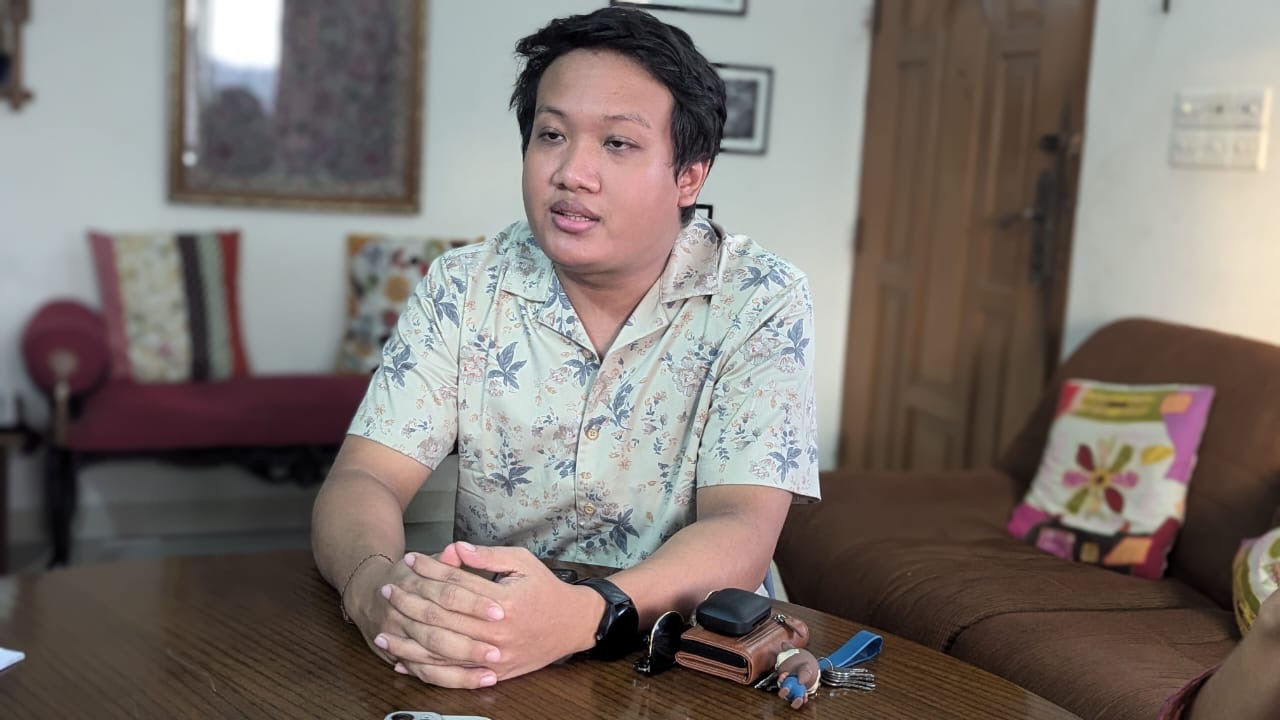
FM: Okay, Hema, I'd like to hear your thoughts on the debate surrounding indigenous, tribal, and small ethnic minorities. How do you view this issue as a member of the younger generation?
Hema Chakma: When considering the terms indigenous, tribal, and small ethnic minority, from the perspective of the younger generation, we also need to think about how Bengalis in the plains view this debate about our identity. We take issue when people generalize us as tribal, but we feel particularly upset when some label us as terrorists or separatists.
The peace accord signed in 1997 clearly states on its first page that we accept the integrity and sovereignty of Bangladesh. Therefore, when people claim we are separatists demanding Jumma land, it appears to be misinformation and propaganda that contradicts the public sentiment in Bangladesh.
The term "tribal" was included in the peace accord because the Chittagong Hill Tracts are home to various tribal groups, and our constitution also refers to us as such. Former education minister Dipu Moni asserted that we should be classified as tribal, not indigenous, claiming that neither the government nor the UN has the authority to label us. This raises an important question: what identity do we, the people, want?
I think all need to understand that those of us in the Chittagong Hill Tracts are part of Bangladesh, and we cannot be excluded from the constitution or subjected to imposed judgments. If the vast majority of people want to identify us as indigenous, that recognition is important too. The titular Raja of the Chakma Circle, Barrister Debashish Roy, noted that including us as indigenous would foster inclusivity, while labeling us as tribal would push us towards secessionist sentiments.
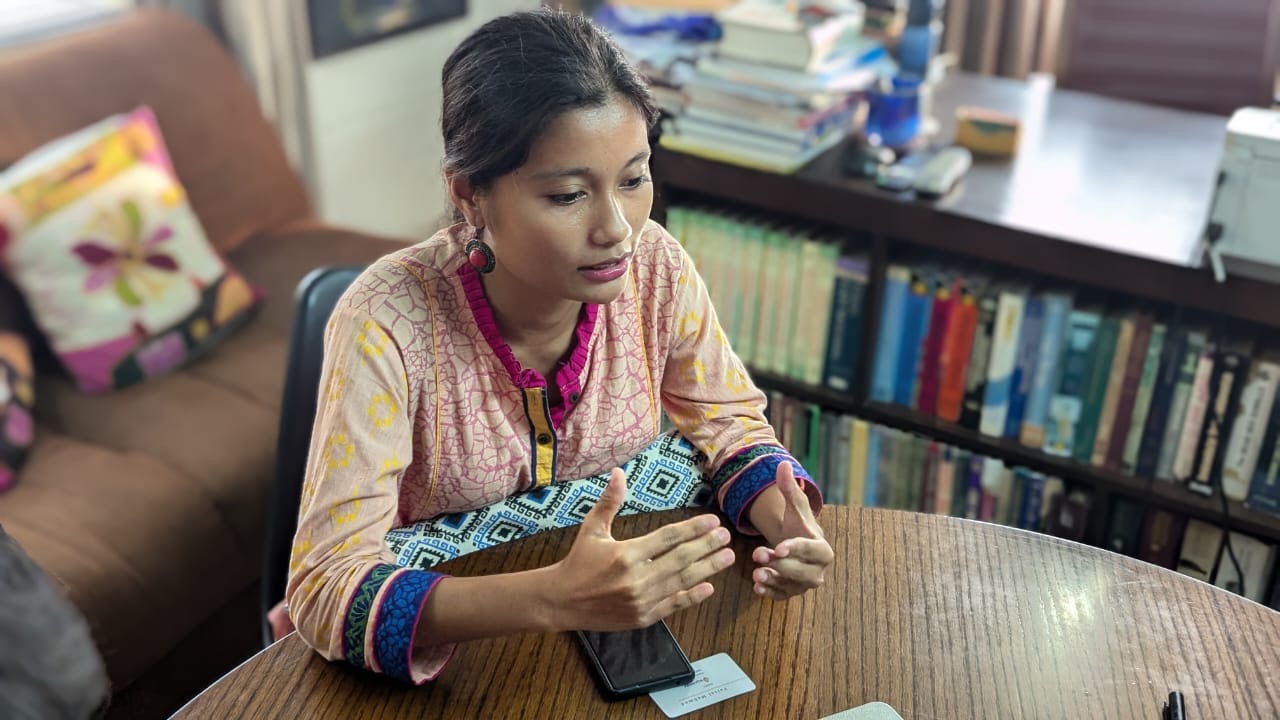
Also the term tribal is problematic. In an independent state like Bangladesh, with its many divisions and districts, the prefix "upo" implies tributary. If we are labeled as tribal, then who are we tributary to? Culturally, we are distinct from the mainstream population in terms of our customs, cuisine, creativity, and dress. We represent a unique nationality.
Historically, land in our communities has been viewed as a common resource, with collective rights rather than individual deeds or legal titles. During the British era, we were excluded from their governance. Therefore, whether we are labeled as indigenous, tribal, or small ethnic minorities is less important to me than addressing our main issues, such as restoring our land rights. If these fundamental problems are resolved, then the terminology itself becomes irrelevant.
FM: Now, let's address the next question: Bengali settlers came to the hill tracts after the hill people. However, they have now become integrated into the region's dynamics. How do you view the significant presence of Bengalis in the hill tracts? Where do they fit into the broader narrative of the CHT debate?
PC: As I mentioned earlier, the CHT was never part of Bengal. By 1860, when representatives of the British Empire arrived, and even during the Mughal and Pakistani periods, the CHT was recognized as a tribal area.
In 1964, when Fazlul Quader Chowdhury briefly served as Pakistan's prime minister, he unilaterally removed the CHT from the list of tribal-excluded areas without consulting us or the Circle chiefs. This sudden decision erased the recognition of our tribal population.
While there were certainly Bengalis living in the CHT—brought in by the Chakma Raja—our communities are primarily reliant on jhum cultivation and unfamiliar with plough agriculture. To teach us ploughing, some Muslim families were brought in, establishing friendly relationships with the Chakma people. These families have been part of the CHT since then.
The inner line permit established by the 1900 regulations, which still exists in regions like Mizoram and Nagaland, was intended to protect our land rights. While it’s not that Bengalis cannot purchase land in the CHT, the process is complicated. We refer to the Bengalis who have lived here for a long time as Adi Bengali, and we have generally maintained amicable relations with them.
Historically, we interacted well with them, especially in Rangamati. However, tensions arose during the insurgency when demographic changes were engineered, using some of these communities as human shields or cannon fodder. Promises were made to landless people in the plains about receiving agricultural land, but in reality, there isn't enough land available in the CHT.
The construction of the Kaptai Dam in 1962 submerged 54,000 hectares of land, flooding 40 percent of our agricultural area. Since then, we have faced deprivation, leading to significant displacement, with some families moving to Tripura and Arunachal. President Ayub Khan's government did not play a constructive role during this time.
AC: When considering the entire context of Bangladesh, I would say the first indigenous people or "sons of the soil" were the Santal and Garo communities, who have been here long before. However, we traditionally haven't used the term "indigenous" to describe people across all of Bangladesh; we have specifically applied it to those living in the hill tracts, claiming that we are the indigenous people of those areas.
Before Bangladesh gained independence in 1971, historical data from the 1900s shows that there were only about 120 Bengali families in the Khagrachari region, referred to as “Adi Bangali” in our language. They were brought in to teach agricultural practices, and we have had no conflicts with them.
The issues began between 1979 and 1982 when four to five lakh Bengali settlers were moved to the CHT. Notably, the term "settler" was used by the government itself, as they officially registered these individuals as settlers when they arrived. These settlers were primarily landless people with no jobs, promised five acres of land for cultivation and monthly rations, which they continue to receive. Our concern isn't with Bengalis purchasing land in the CHT, but with those who receive government assistance and were part of a larger resettlement plan.
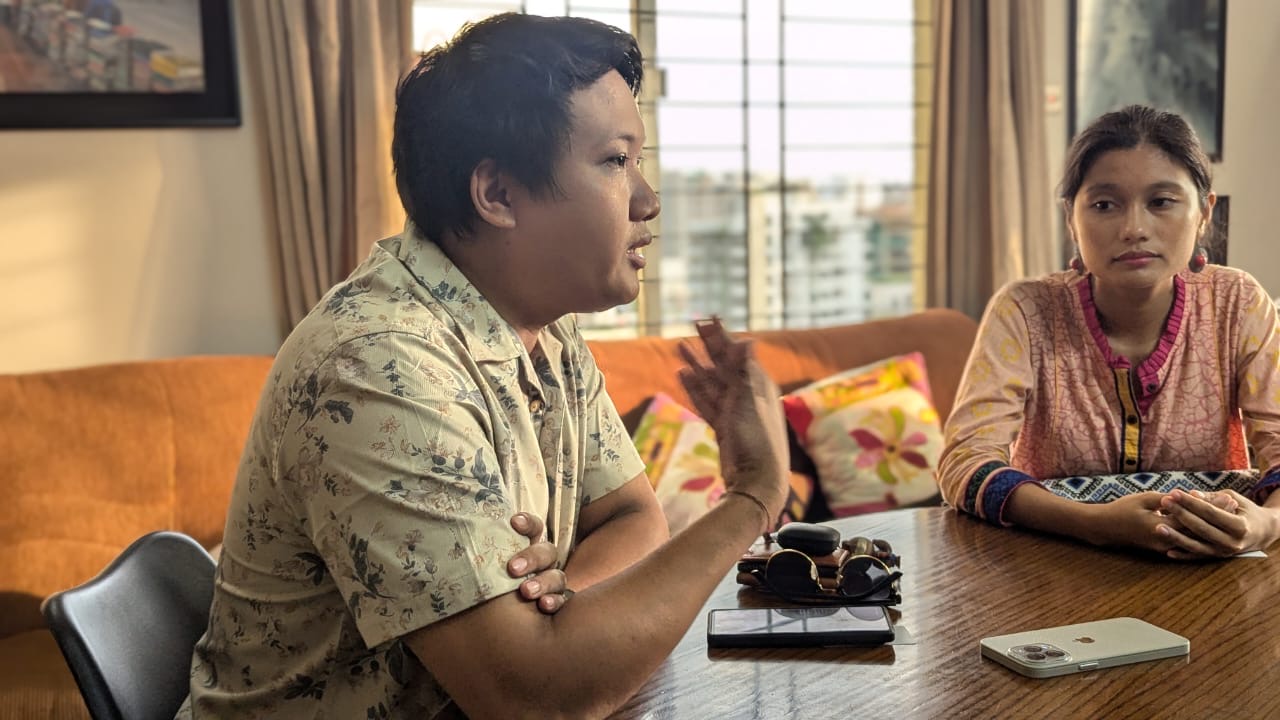
I am mentioning this again that historically, the CHT was never part of Bengal. Even before 1860, the Chakma Rajas resisted British colonization while other rulers surrendered. Battles against the British East India Company took place in Chittagong, and an accord was eventually reached during the reign of Rani Kalindi Rani. She was given the chance to establish a separate state but, regrettably, failed to recognize its importance and chose to stay aligned with India or Pakistan.
HC: When it comes to the term "adibashi" or indigenous, I don't think it simply refers to being present since ancient times. Just because a group has existed in a region for a long time doesn't automatically make them indigenous, in my view. Indigenous peoples are those who have managed to maintain their unique characteristics and way of life even after enduring colonial rule, including the Mughal period, British rule, and subsequent governance by Pakistan and Bangladesh.
Despite these various forms of rule, we have preserved our distinct lifestyle—ranging from our eating habits and clothing to our cultural practices. Therefore, being indigenous is not solely about historical presence; it is about the ability to uphold an independent lifestyle through the challenges of colonialism and beyond.
FM: The Bangladeshi government maintains a significant military presence in the CHT, viewing the situation primarily through a security lens. They believe that without this military presence, there could be a separatist movement, potentially leading to the CHT becoming part of India or the emergence of a separate entity known as Jummland. As representatives of the younger generation, what are your thoughts on the rationality of addressing the CHT issue solely from a security perspective?
PC: I'm grateful for this question, as it's a crucial topic. When the constitution was drafted in 1972, our representative, Manubendra Larma, who is Shontu Larma's elder brother, raised several important points on behalf of the CHT region. M.N. Larma always advocated for inclusivity, particularly concerning national identity. He highlighted the plight of day laborers, workers, and farmers in the constitution, voicing their concerns.
When Sheikh Mujibur Rahman addressed a public meeting in Rangamati in 1973 and declared that everyone must identify as Bengali, he acknowledged the broader national context, given his role as the undisputed leader of the independence movement. M.N. Larma's appeals for inclusivity however were largely ignored.
After the formation of BAKSHAL in 1975, Sheikh Mujib expressed an understanding of the challenges faced by the hill people, encouraging Larma to join. Although M.N. Larma fought for democracy, he ultimately compromised his identity to join BAKSHAL. However, after Sheikh Mujib's assassination on August 15, 1975, Larma recognized the shifting political landscape and opted for armed resistance.
It’s however important to note that nowhere in the constitution of the Parbatya Chattagram Jana Samhati Samiti (PCJSS) does it state that we seek an independent state.
This is crucial—we have never sought independence; rather, we have always wanted to be included in Bangladesh. The Shanti Bahini was established as the armed wing of the PCJSS specifically to advocate for our rights and identity. Despite 54 years of independence, the underlying tensions in the CHT persist because these issues remain unresolved. The peace accord, as Hema mentioned, begins by affirming PCJSS's trust in Bangladesh's integrity and sovereignty, making it clear that we do not wish to secede.
Since the peace accord was signed in 1997, we have never pursued a separatist agenda or sought to create "Jummland." M.N. Larma used the term "Jumma" to collectively represent the 13 nationalities in the region, not to link it to Jhum cultivation. He intentionally chose this term to be inclusive, avoiding any reference to his Chakma identity to ensure that Marma and Tripura people felt represented as well.
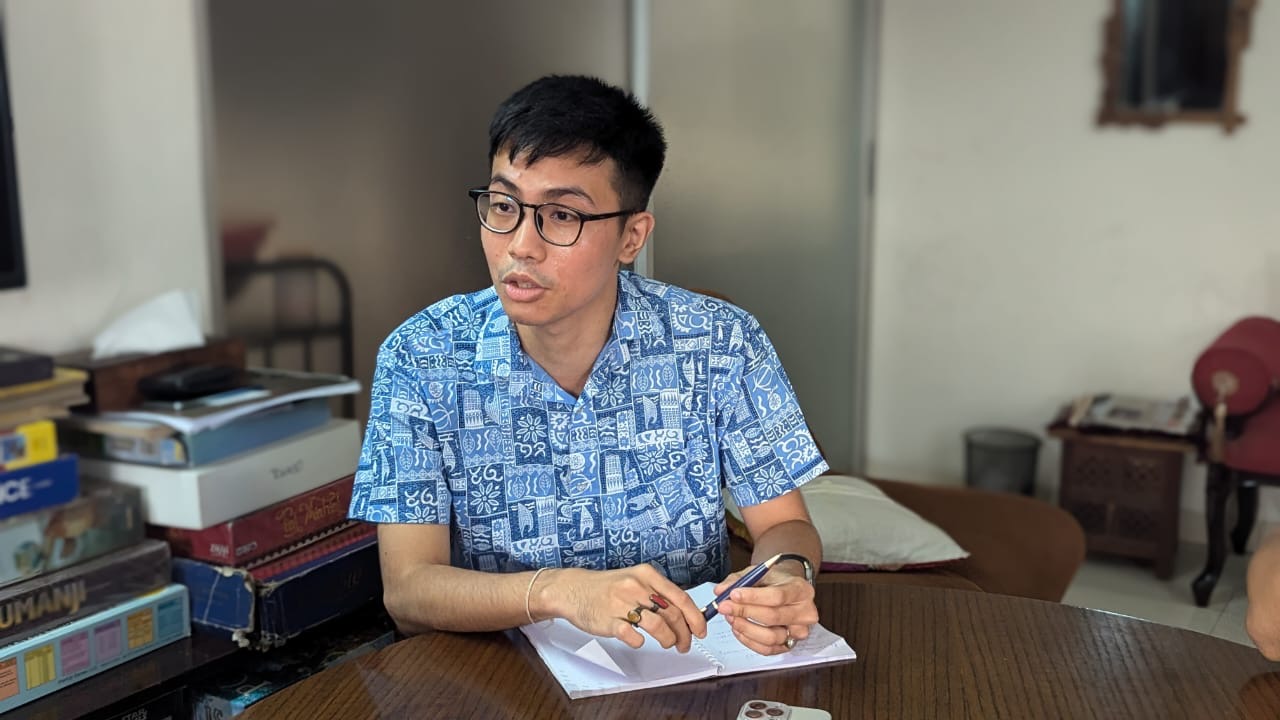
Regarding military presence, the peace accord stipulates that six cantonments will remain in Khagrachari, Bandarban, and Rangamati to safeguard Bangladesh’s sovereignty. However, we believe that withdrawing the 400 temporary camps would suffice. Given the geopolitical significance of the CHT, connected to Burma and India’s Seven Sister states, military presence is obviously necessary, but the current level is excessive.
We all have to understand that the establishment of a mixed police force—including Bengali, Marma, Chakma, and members from other hill communities—is essential for building trust and understanding. Having engaged in armed struggle for 24 years, we recognize the need for confidence-building measures.
Unfortunately, the recruitment of hill people into the army remains minimal. If the government genuinely wanted to integrate us into security forces, it could have done so, akin to how other nations have integrated diverse communities into their military structures.
Former home ministry advisor Brigadier General (Retd) Sakhawat Hossain, who spent considerable time in the CHT, noted that addressing the challenges faced by hill people requires a broader perspective that goes beyond mere security concerns. The political landscape is simplified to two identities: Bengali or hill person, overshadowing other political affiliations.
Recent incidents of mob violence, including the tragic killing of Mamun, highlight the urgent need for accountability. Mob justice creates dangerous precedents, especially during times of instability. The violence shouldn’t have spread beyond its origin point, indicating a lack of administrative foresight. The U.S. embassy’s travel advisory and warnings from military sources underscore the seriousness of the situation.
It's perplexing that the military and civilian authorities appear to underestimate the complexities in the CHT. This latest incident isn’t isolated; previous occurrences have gone unaddressed, with commission reports remaining unpublished. This is very unfortunate.
AC: Parban has already covered many key points, so I’d like to offer a different perspective. I believe the Bangladesh government has effectively transformed the CHT into a special military zone. It’s not just a matter of viewing the area through a military lens; we must consider which forces or military interests are benefitting from this situation. Across Bangladesh, we see the military increasingly acting like a corporate entity.
For instance, when Sajek was developed and numerous resorts were built, why did the army get involved in creating those resorts? Is it the military's role to construct resorts and roads? The army should assist during natural disasters, but they aren’t meant to handle infrastructure projects like bridge construction or road repairs.
One reason hill people oppose tourism is because resort development often involves the eviction of local residents and the construction of roads that encroach on their land without any compensation. Many families, including those from the Lusai community, were displaced before Sajek was established. We consistently point out that there are no hospitals, schools, or adequate communication systems in the CHT. When we raise these issues, some respond by criticizing our complaints about the military building roads.
However, we object to the army's construction efforts because they typically only build roads to facilitate access to tourist resorts or their own facilities, not to benefit local communities. For example, Sajek lacks basic services like hospitals or schools. Years after the establishment of the tourist resort, a tragedy occurred where several boys fell ill, and air ambulances were needed for rescue. Despite the presence of these resorts, no hospital has been built.
I can also give an example regarding the highly contentious issue of Kuki Chin. It is important to note that we recognize it as a secessionist group that does not have the support of the hill people. After they attempted to rob several banks, the military labeled the Bawm community as terrorists. The Bawm people now require permission to obtain basic goods like salt, rice, or meat, under the assumption that they might supply these to the Kuki Chin.
This persecution and suppression raise questions about who benefits from these actions. Is the goal to justify the expansion of military zones in the CHT? Parban rightly pointed out that the peace accord stipulates the withdrawal of all temporary military camps in our three hilly regions, except for six cantonments. Yet, despite the years that have passed since the accord was signed, a recent UN report shows over 300 temporary camps still operating in the CHT. This ongoing military presence has led to the clear persecution of communities like the Bawm.
It’s disheartening to see the media remain silent when a Notre Dame College student was arrested under suspicion of being part of the Kuki Chin group simply for going home. Even a member of the national sports team was incorrectly labeled as a Kuki Chin member, leading to the arrest of an entire village. If the military is as capable as they claim, they should focus on apprehending actual Kuki Chin members rather than harassing innocent civilians.
HC: First of all, let me clarify that we are not against the military itself; rather, we oppose military rule. Parban da and Aditya Da have covered many points, so I’d like to share a personal experience as a witness.
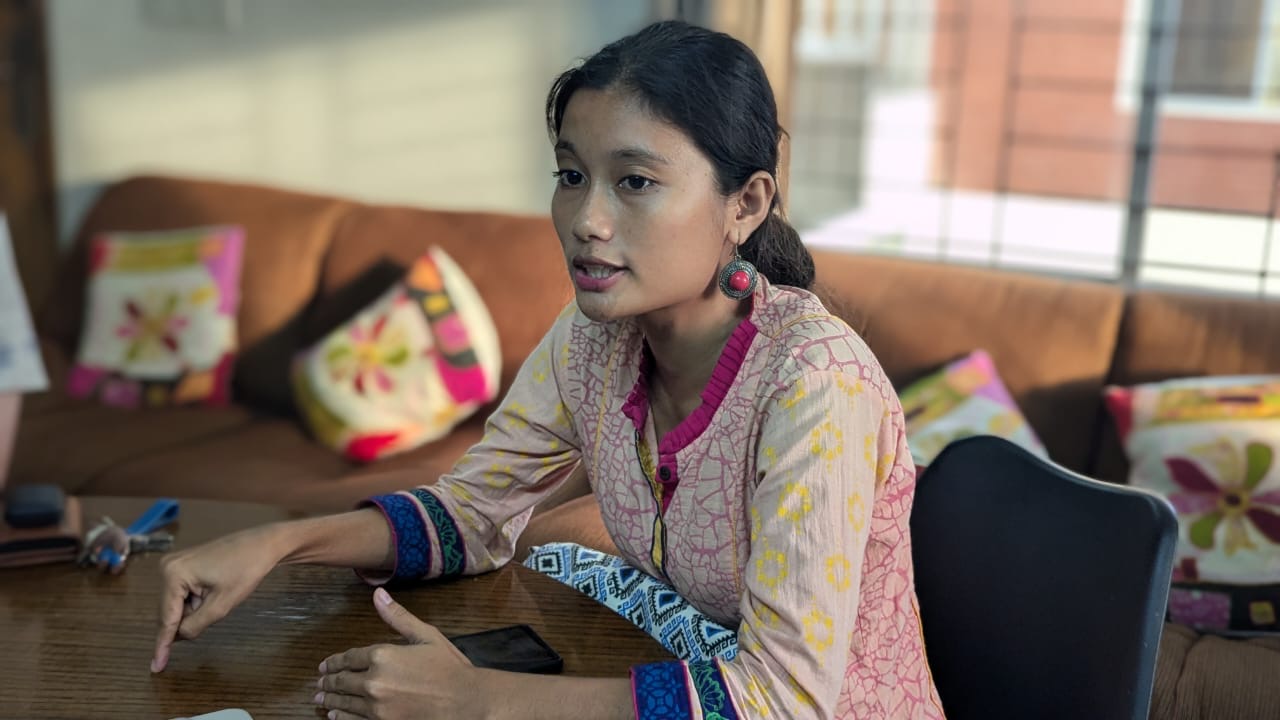
Biju is our most significant social festival. The Chakma refer to it as Biju, the Marmas call it "Sangraig," and the Tripuris say "Baisuk." According to our cultural practices, we celebrate Biju at night and gather in groups. During Phul Biju, we pick flowers after midnight.
When my friends and I went to pick flowers, we needed to cross a certain zone for which we need permission from the army. As a result, in most cases, I can't even leave my house after midnight during the Biju festival. This is my home and my area, yet I’m restricted from moving freely. I recognize that there are terrorists involved in the secessionist movement for Jummland, but that doesn't justify harassing innocent civilians.
Take the Bawm community, for example: even if 90 percent are associated with the Kuki Chin group, that doesn’t mean the remaining 10 percent should be detained. Recently, a member of the Bawm community shared on Facebook that he needed military permission to travel from Bandarban to Cox’s Bazar for work. We have documented evidence of these challenges. Does the same rule apply in the hill tracts as in the plains? Why is there such discrimination?
If we talk about armed conflict in the hill tracts, the military has all the necessary equipment and resources to tackle the situation. So why are they unable to resolve these issues? Why can’t they eliminate the terrorists when they have such power at their disposal?
FM: The last question requires long discussion but I'd appreciate a brief response. It's about the Chittagong Hill Tracts Peace Accord. The government frequently claims that most of the clauses have been implemented, while the hill people assert that two-thirds remain unaddressed. Can you clarify what has actually been accomplished and what hasn’t?
PC: The Chittagong Hill Tracts Peace Accord, signed on December 2, 1997, marked the surrender of the armed wing of the PCJSS, allowing its members to return to civilian life. The accord consists of 72 clauses divided into four sections: general provisions, the establishment of a regional council, the election of hill district councils, and miscellaneous points. However, key issues, such as land rights and the formation of the land commission, have seen no progress; for instance, my family's case has never been heard.
The mixed police initiative was intended to foster trust within the indigenous community. When the Awami League took power after 1/11, they implemented a pilot mixed police program from 2010 to 2011, which initially created a positive atmosphere between the hill people and Bengalis.
One major concern is the land system in the hill tracts, which differs significantly from that in the plains. The peace accord recognized traditional institutions like the circle chief, headman, and karbarii, making their consultation essential for land-related matters. Despite the establishment of a task force aimed at rehabilitating internally displaced families from Tripura, not a single person has been helped.
I believe the government needs to approach the land system and policing from the perspective of the hill people. Addressing these issues of mistrust will be beneficial for everyone and allow Bangladesh to fully realize the potential of the CHT accord.
AC: I believe the government claims to have implemented most of the treaty, but the cornerstone of our agreement is land, which is integral to our culture, tradition, and identity. While the government asserts that many clauses have been enacted, the crucial issue of land remains unresolved.
The treaty clearly states that individuals sponsored by the government who receive rations and do not legally own the land must be removed from the CHT and relocated elsewhere. Refugees who fled to India in 1989 should also be brought back and allowed to settle on their rightful land.
We are not advocating for the eviction of the Adi Bangalis; rather, we want those who settled in the CHT to return the land they occupy. However, reclaiming this land is a complex process. Since many settlements occurred in the 1980s, it has been nearly forty years. If you ask someone who arrived in the 1990s, they might claim they’ve been there for a decade or more. Now, their second or third generations are living there, and if you tell them to leave, they will argue that their grandparents settled there long ago. The longer the implementation of the peace accord is delayed, the greater the problems will become.
There appears to be a lack of genuine goodwill from the successive governments. Although the Awami League initiated the peace accord, it wasn’t effectively implemented, especially given the BNP's protests at that time. Furthermore, the mixed police force has not been properly established; we saw some presence years ago, but that has since diminished.

The land commission exists in name only and lacks real authority. Land grabbers, like the S Alam group, are establishing rubber plantations on land they shouldn’t possess, and organizations like Bidyanondo have forcibly evicted families to seize their land. Therefore, despite the government’s claims, the fundamental issues surrounding the peace accord remain unresolved.
HC: To respond to your question, I want to share an incident. Recently, there was flooding in many upazilas of Khagrachari, and the relief sent from the plains included chira or flattened rice. In my community, our daily diet consists of rice, steamed vegetables, and mashed chili. While those of us who moved to the plains for education understand what chira is, our parents and grandparents, who may not be as educated, don’t know how to eat it or even semolina. We're accustomed to meals that consist of cooked rice and curry.
If I draw a parallel with the peace
accord, it's like going to a dinner at your home where you serve dishes like
polao, korma, and biriyani, but you neglect to offer us our traditional food,
which we refer to as nappi (shrimp paste). You might think you've provided us
with lavish food, yet we leave unsatisfied because you haven't catered to our
needs.
Similarly, when you claim to have implemented
48 out of 72 clauses of the peace accord, you may be overlooking the most
crucial aspects. The legality of the accord is questionable if the fundamental
issues remain unaddressed.
FM: Thank you all for your time.
—-

